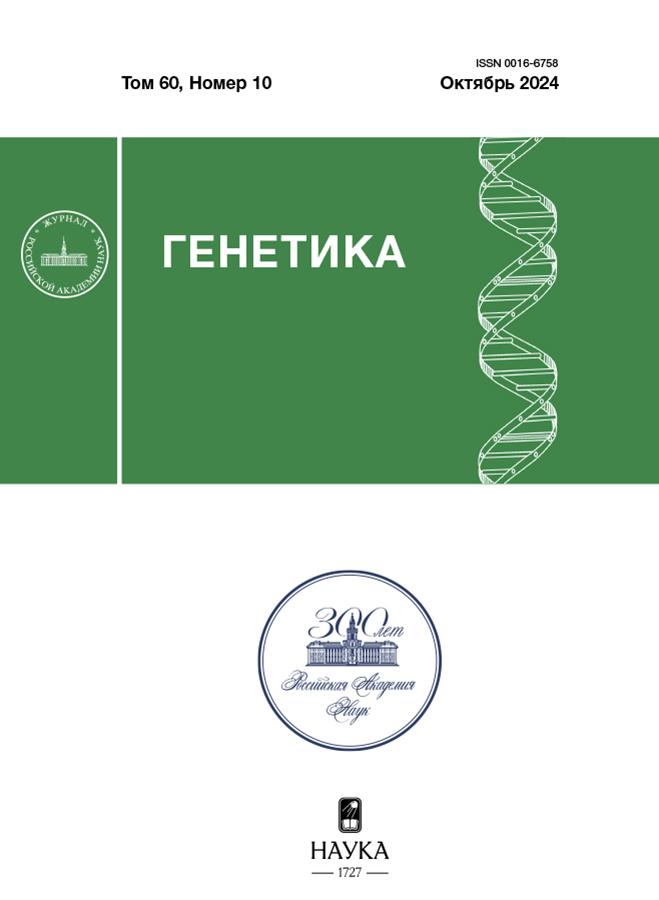The genome of Staphylococcus epidermidis Isolated from Caseous Tuberculoma
- Autores: Sinkov V.V.1, Orlova E.A.1, Ogarkov O.B.1, Suzdalnitsky A.E.2,3, Kondratov I.G.1, Belkova N.L.1, Rychkova L.V.1
-
Afiliações:
- Scientific Сentre for Family Health and Human Reproduction Problems
- Irkutsk Tuberculosum-prevention hospital
- Irkutsk State Medical University
- Edição: Volume 60, Nº 10 (2024)
- Páginas: 129-134
- Seção: КРАТКИЕ СООБЩЕНИЯ
- URL: https://rjonco.com/0016-6758/article/view/667191
- DOI: https://doi.org/10.31857/S0016675824100139
- EDN: https://elibrary.ru/wefylg
- ID: 667191
Citar
Texto integral
Resumo
A number of facultative-anaerobic lipophilic microorganisms, including representatives of Corynebacterium and Staphylococcaceae, inhabit the necrotic contents of tuberculomas. A strain of Staphylococcus epidermidis was isolated from caseum, fully genome sequenced, and gene-mapped. The coagulase-negative Staphylococcus belonged to the MLST 73 genotype and was resistant to two antituberculosis drugs. The strain phenotypically had urease, gelatinase and beta-hemolytic activities and possessed the corresponding genes. Similar to S. epidermidis O47, its genome consists of a single chromosome containing approximately 2.4 million base pairs, and oriC has the same orientation. A total of 2333 genes were identified, of which 2206 were coding genes. In contigs of the genome, sequences of plasmid replication genes were found: rep7a, rep13, rep5b and pSK1. Phylogenetic analysis indicates the closeness of the analyzed genome with a large group of European strains. Considering the biochemical and microbiological properties of the isolated strain, we hypothesize that staphylococci and other facultative-anaerobic satellite microorganisms of tuberculosis foci may play an important role in caseum liquefaction due to their own proteolytic activity and attraction of neutrophils to the focus of inflammation.
Palavras-chave
Texto integral
Sobre autores
V. Sinkov
Scientific Сentre for Family Health and Human Reproduction Problems
Email: obogarkov@mail.ru
Rússia, Irkutsk, 664003
E. Orlova
Scientific Сentre for Family Health and Human Reproduction Problems
Email: obogarkov@mail.ru
Rússia, Irkutsk, 664003
O. Ogarkov
Scientific Сentre for Family Health and Human Reproduction Problems
Autor responsável pela correspondência
Email: obogarkov@mail.ru
Rússia, Irkutsk, 664003
A. Suzdalnitsky
Irkutsk Tuberculosum-prevention hospital; Irkutsk State Medical University
Email: obogarkov@mail.ru
Rússia, Irkutsk, 664039; Irkutsk, 664003
I. Kondratov
Scientific Сentre for Family Health and Human Reproduction Problems
Email: obogarkov@mail.ru
Rússia, Irkutsk, 664003
N. Belkova
Scientific Сentre for Family Health and Human Reproduction Problems
Email: obogarkov@mail.ru
Rússia, Irkutsk, 664003
L. Rychkova
Scientific Сentre for Family Health and Human Reproduction Problems
Email: obogarkov@mail.ru
Rússia, Irkutsk, 664003
Bibliografia
- Natalini J.G., Singh S., Segal L.N. The dynamic lung microbiome in health and disease. // Nat. Rev. Microbiol. 2023. V. 21. P. 222–235. https://doi.org/10.1038/s41579-022-00821-x
- Орлова Е.А., Огарков О.Б., Кондратов И.Г. и др. Анализ разнообразия и функционального потенциала бактериальных сообществ туберкулезных очагов // Клеточ. техн. в биол. и медицине. 2024. № 1. С. 29–36. https://doi.org/10.47056/1814-3490-2024-1-29-36. Cell Technologies in Biology and Medicine 2024. № 1. С. 29–36.)
- Орлова Е.А., Огарков О.Б., Суздальницкий А.Е. и др. Анализ микробного разнообразия казеозного некроза туберкулезных очагов // Мол. генетика, микробиология и вирусология. 2021. Т. 39. № 3. С. 18–24. https://doi.org/10.17116/molgen20213903118 https://doi.org/10.3103/S0891416821030058)
- Огарков О.Б., Суздальницкий А.Е., Кондратов И.Г. и др. Выделение и полногеномное секвенирование липофильной анаэробной бактерии, представителя видового комплекса Corynebacterium tuberculostearicum, из туберкулезного очага //Acta Biomedica Scientifica. 2023. Т. 8. № 4. С. 12–19. http://dx.doi.org/10.29413/ABS.2023-8.4.2
- Russell D.G., Cardona P.J., Kim M.J., Allain S., Altare F. Foamy macrophages and the progression of the human tuberculosis granuloma // Nat. Immunol. 2009. V. 10. № 9. P. 943–948. https://doi.org/10.1038%2Fni.1781
- Mellmann A., Becker K., von Eiff C. et al. Sequencing and staphylococci identification // Emerg. Infect. Dis. 2006. V. 12 № 2 P. 333–336. https://doi.org/10.3201%2Feid1202.050962
- Sun D.L., Jiang X., Wu Q.L., Zhou N.Y. Intragenomic heterogeneity of 16S rRNA genes causes overestimation of prokaryotic diversity // Appl. Environ. Microbiol. 2013. V. 79. № 19. P. 5962–5969. https://doi.org/10.1128/aem.01282-13
- Jolley K.A., Bray J.E., Maiden M.C.J. Open-access bacterial population genomics: BIGSdb software, the PubMLST.org website and their applications // Wellcome Open Res. 2018. V. 24. № 3. P. 124. https://doi.org/10.12688/wellcomeopenres.14826.1
- Raue S., Fan S.H., Rosenstein R. et al. The Genome of Staphylococcus epidermidis O47 // Front. Microbiol. 2020. V. 25. № 11. https://doi.org/10.3389%2Ffmicb.2020.02061
- Sarathy J.P., Dartois V. Caseum: А niche for Mycobacterium tuberculosis drug-tolerant persisters // Clin. Microbiol. Rev. 2020. V. 33 № 3. https://doi.org/10.1128/cmr.00159-19
- Palmieri B., Vadalà M., Roncati L. et al. The long-standing history of Corynebacterium parvum, immunity, and viruses // J. Med. Virol. 2020 V. 92. № 11. P. 2429–2439. https://doi.org/10.1002%2Fjmv.26100
Arquivos suplementares











